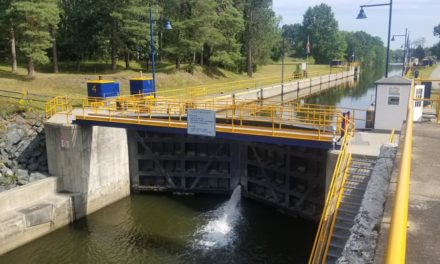I used to work in Downtown Troy at a local communications firm, and during that time, I completely ate up all of the things about working downtown.
Typically, I’m high strung and full of anxiety, so “downtowns” aren’t my thing. I hate driving anywhere I have to parallel park, but Troy is so walkable that I seemed to do OK (and I was able to park in a garage, which also helped).
At the time, my husband and I were also soon-to-be new residents of Rensselaer County, so we were looking forward to supporting the small businesses, and enjoying the Saturday Troy Farmers’ Market.
One of our introductory trips took us to the old Franklin Alley. For the uninitiated, this small alley runs between River Street and Broadway, more or less connecting The Dutch Udder and the Whistling Kettle. Think of it as one of those secret shortcuts in the game of Clue that connects you from the Conservatory to the Kitchen.
I’ll be honest, at the time it was super sketchy – even in broad daylight; full of dumpsters, trash, and back alley access doors to the neighboring businesses. If I wasn’t with my husband, I would not have taken that route. (Not that I need a man to protect me; I just wouldn’t have taken it alone.)
So you can imagine that I was very excited to see Troy Mayor Patrick Madden announce the revitalization of Franklin Alley.
But when I went to check it out, my first impression was, “this is it?”

I liked the newly paved macadam and new sidewalks, and I was happy to see that some of the graffiti had been removed, but I really wasn’t as wowed as I thought I’d be. I thought, “Ok, cool you cleaned up the street; isn’t that what municipalities are supposed to do?”
But then I started finding out more information, some of which hadn’t initially been shared by the city, including some things I think a lot of people would have liked to know.
The main complaint I heard, and I shared the same disappointment, was that the artist who created the pieces adorning the red-brick industrial walls wasn’t local – like, not even from the Capital Region. We have such a large network of artists and creatives in our area, why couldn’t we have commissioned one of them?
However, after speaking with Belinda Colón, Curator at the Arts Center of the Capital Region who partnered with the City on the project, I learned that this wasn’t the artist’s first time here.
A decade ago, local artist and activist Sampson Contompasis organized a project inside the former St. Joseph’s Church in the south end of Albany on Ten Broeck Street. That project featured artist, Joe Iurato, a native of Northern New Jersey. From his time working on that installation, he knew the area, but he didn’t know much about the City of Troy, specifically.
When the Arts Center of the Capital Region was brought into the Franklin Alley project, they discussed first what kind of art and imagery was needed to spruce up the old alleyway. They were looking for someone who had not only done street art, but also 3D forms as a street artist.
Large murals wouldn’t have worked well because of how the alley is laid out. The Center wanted to make sure the industrial appeal of its walls were “accepted, instead of smothered in paint,” said Colón. There weren’t too many artists who had all of those qualifications in their portfolio. Iurato fit the bill.
The Center reached out to Iurato and then went about getting him in touch with as many local folks as possible. They even hosted two open conversations and invited people to come and meet Iurato, and he also met with local kids at the Troy Boys & Girls Club.
He would frequently make trips North to simply talk to people walking along the street. He really immersed himself in the life of the city. He even gave out his email to further communicate with citizens he met to keep their conversations going. According to Colón, Iurato was also sensitive to how it would look to the locals if someone from the outside took on this project and worried about that.
By the time the project was complete, Iruato had created a total of 15 pieces on the alley walls.

At the Broadway end, there’s an existing mural designed by Barbara Nelson, executive director of TAP, Inc., that was first installed about five years ago. Nelson renewed the mural for the Franklin Alley Project.
So with the art matter settled, there was this one question still sitting in the back of my brain; what did the city do with all the dumpsters?
Businesses have to throw away their garbage, but the dumpsters formerly housed in Franklin Alley are nowhere to be seen. An alley is a very integral part of a city – it has a purpose, and usually that purpose is to house things like dumpsters to keep them off of sidewalks. In this case, according to the city, each dumpster was placed inside a garage off of the alleyway. But they were decreased in size, and the pick-up route was increased so that the dumpsters don’t overflow.
The “new” Franklin Alley revitalization project concept originated in 2013. Planning began about 18 months ago, according to the city, and construction began this past June. Everything was completed this month.
Colón says there’s a push to get more local artists involved in the Center’s next project. It’s called the United Line, and it will surround artwork on the pilings under the Hoosick St. Bridge in Troy.
Right now, it’s in the community outreach and conversation stage, and will likely put a call out to local artists this winter. The Center won a Bloomberg grant for the project, which will need to be started by next spring, and completed by the summer.



